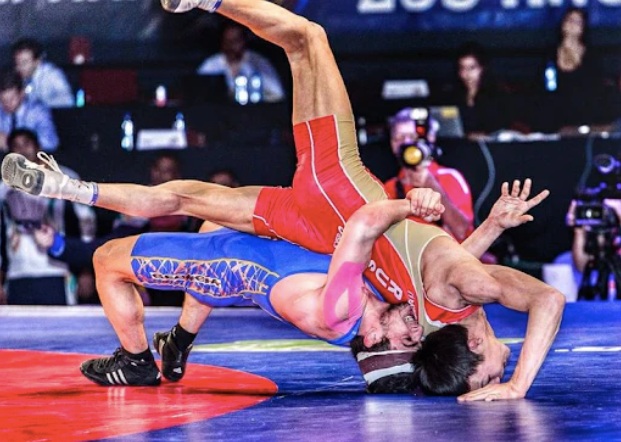Breakfalls are fundamental skills that contribute to the safety, confidence, adaptability, and effectiveness of martial artists and grapplers across various disciplines. They form an essential component of martial arts training and are crucial for both recreational practitioners and competitive athletes alike.
Breakfalls are not only beneficial in controlled training environments but also in real-life self-defense scenarios. In situations where individuals may be pushed, knocked off balance, or thrown to the ground unexpectedly, the ability to execute breakfalls can mitigate the impact and increase the chances of avoiding injury.
Breakfalls teach individuals how to land safely and efficiently when thrown or falling, reducing the risk of injury. By dispersing the impact across a larger surface area and maintaining control of the body’s momentum, breakfalls can significantly decrease the likelihood of sprains, strains, and fractures.
Wrestlers typically don’t include break falls in their training regimen, and they have good reasons for it. It’s not about the mat’s hardness, but rather a few main factors:
Firstly, wrestlers believe in training the way they compete. Performing break falls in wrestling can often lead to conceding advantageous positions to opponents, potentially resulting in being pinned. Wrestlers learn alternative techniques to land safely without sacrificing control.
Secondly, the level of control exerted by an opponent in wrestling differs from that in Judo. In Judo, where opponents have significant control over each other during throws, break falling is crucial to prevent serious injuries. However, in wrestling, where there’s less grip due to the absence of a gi, the risk of catastrophic injury is lower, and wrestlers have more opportunities to defend themselves mid-air without relying on break falls.
Thirdly, the objectives and techniques in wrestling are different from those in Judo. Wrestling focuses more on grappling and control on the ground, with less emphasis on throws compared to Judo.
Fourthly, the mats used in wrestling are different and generally softer, reducing the need for breakfall skills to the same extent as in Judo.
Wrestlers do learn how to land safely from common wrestling moves, but this training might not be as formalized or extensive as the breakfall techniques in Judo. Additionally, the rules and scoring systems in wrestling don’t encourage the kind of high-impact throws found in Judo, so the necessity to master breakfalling is less pronounced.
However, it’s worth noting that some wrestling programs may incorporate breakfall techniques to varying degrees, especially for wrestlers who transition to other martial arts or who want to improve their overall grappling skills. Additionally, while breakfalls may not be explicitly taught in wrestling, wrestlers often develop similar skills through their training experiences.


















